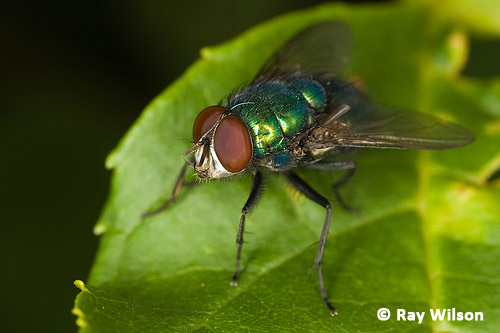

Calliphoridae are generally shiny, metallic flies that lay their eggs on carrion and/or dung. Their astounding ability to detect dead animals from a distance of up to 16km enables them to often be the first animals to arrive at a carcass.

The dietary preference of the larvae of some species for necrotic tissue has led to the maggots being used in surgical procedures to help clean infected wounds. Maggot debridement therapy (MDT) has been used since the dawn of civilisation by numerous disparate and ancient cultures, such as Australian aborigines, Mayan Indians of Central America and the Hill people of Northern Myanmar. Recently MDT has come back into vogue in the Western world, with modern treatments including the cleaning of decubitus ulcers and infected post-surgical wounds. Studies have shown that maggots are capable of safely removing necrotic and infected tissue at more than double the rate observed when using conventional medicinal methods.

Unfortunately, unlike the maggots used for modern medical procedures, wild blowflies are far from sterile and their attraction to rotting flesh and excrement has the inevitable consequence of these flies also being responsible for the spread of numerous diseases, such as dysentry, Salmonella and other bacterial infections.

Ray Wilson owns the copyright of all images on this site.
They may not be used or copied in any form without prior written permission.
raywilsonphotography@googlemail.com